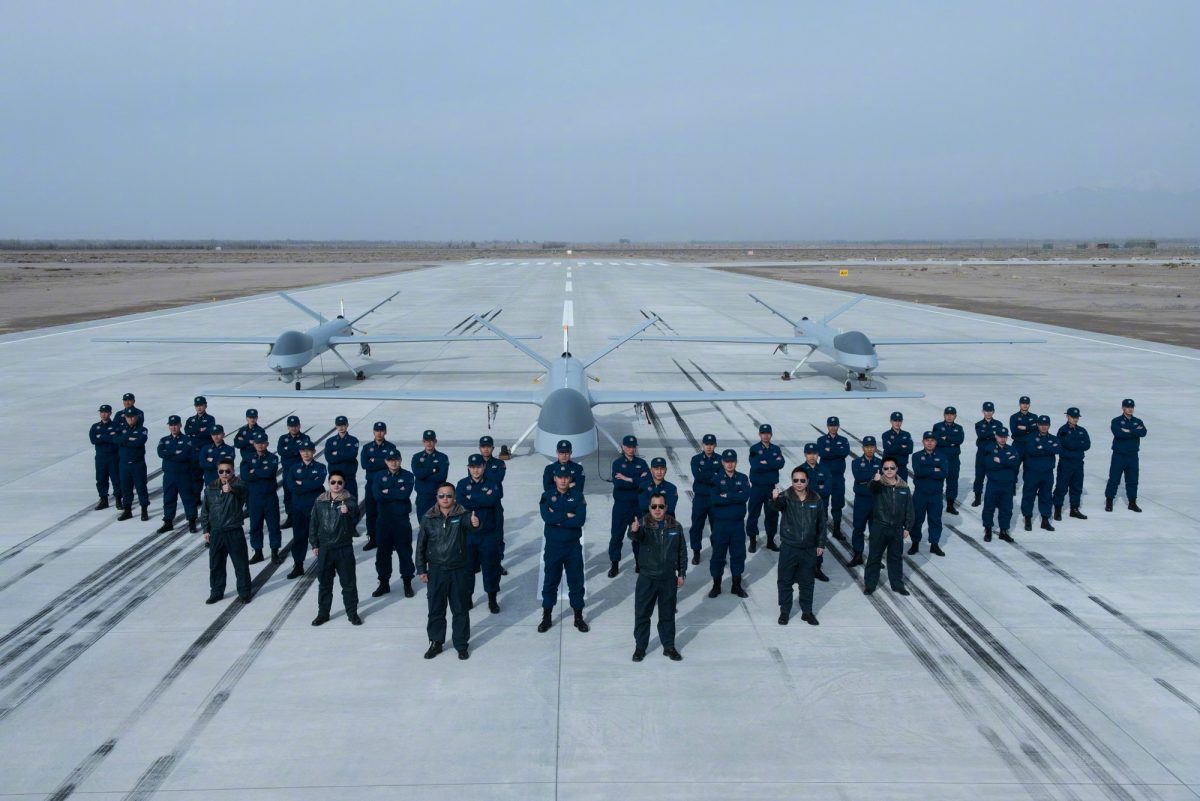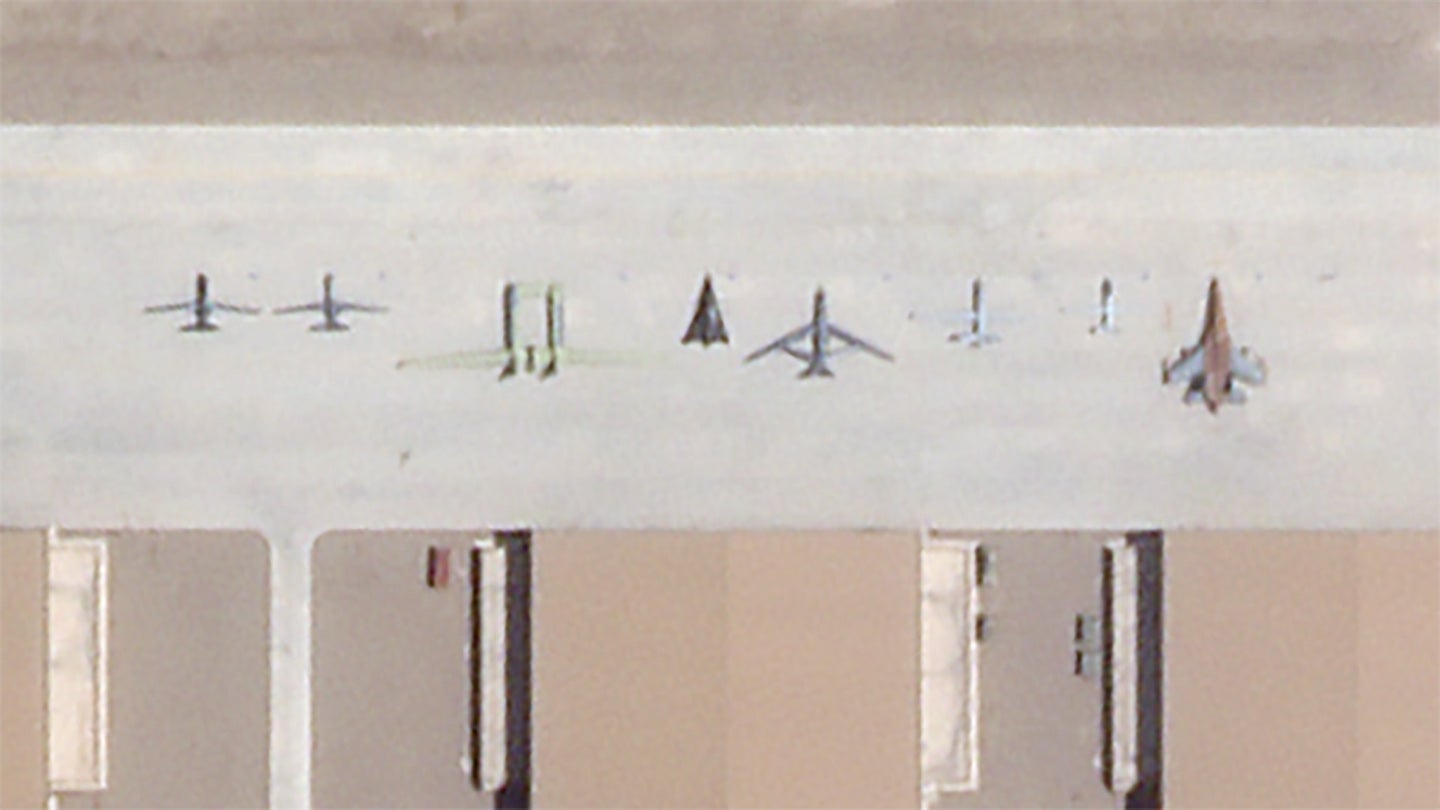The United States is publicly pursuing its Skyborg artificial intelligence program—among other associated initiatives—that is mainly focused on infusing unmanned combat aircraft with advanced autonomous capabilities, but it could also work as a copilot of sorts for manned platforms. Now there seem to be indications that China could be test-flying a similar concept on a J-16 Flanker fighter. This is part of a broader push by both countries’ air arms to rapidly enhance their unmanned capabilities, including the development of manned-unmanned teaming and optionally manned air combat concepts.
The War Zone obtained a satellite image dated June 1 of China’s secretive test base near Malan in Xinjiang province, which is known to be on the leading edge of the country’s unmanned military aircraft development efforts. The photo shows a lineup of various drones being tested at the base, all of which have been previously identified, outside of the large unmanned aircraft hangars that line a long taxiway that services the western extension of the base.


These line-up displays of unmanned aircraft that the site is actively working to develop are hardly new. In fact, they have become an odd staple of the facility. What makes this lineup different from those in the past is that it includes a variant of a manned Flanker fighter among the unmanned aircraft. While manned fighters do visit the main ramp of the base fairly regularly for training and development purposes, we have never seen the base’s unmanned aircraft intermixed with a manned aircraft like this before, and there could be a very good reason for it.


At first glance, we thought this could be an unmanned or optionally manned Flanker derivative that is undergoing testing, or something to do with aerial teaming of manned and unmanned aircraft—a capability that China is actively developing. While any of those possibilities remain possibilities, it also appears that an AI infusion program may indeed be underway that leverages just such an aircraft as a surrogate. Such a program has huge potential to impact other aerial unmanned systems, as well as manned ones, in the PLA’s inventory.
@Rupprecht_A, who keeps a very close eye on airpower developments out of China, posted about a possible J-16 AI testbed last March:
Could this be the same aircraft seen at Malan? It’s possible. It would also make sense why it would be tested at a base that spearheads the country’s unmanned air combat development initiatives. Using a surrogate fighter for a synthetic pilot AI ‘brain’ before it is moved to an unmanned asset also makes sense.
Still, we can’t say for sure what this aircraft is capable of or why it ended up among some very unique counterparts on the UAS ramp at Malan, but it seems somewhat unlikely to be just a coincidence or a chase plane or something along those lines, but that’s always possible. We also do know that China has piped up recently about its own trials that pit its pilots against an AI adversary in simulated combat. While these tests could have been simulated, we have no clue about the broader focus of such an initiative and if it mirrors Skyborg, which is now flying on actual unmanned platforms.

With all that being said, even an optionally manned or completely unmanned Flanker—a type which serves as the heavy fighter backbone of China’s air arms—could work as a valuable surrogate testbed for other unmanned concepts and it could have valuable combat capabilities in its own right even without an AI-enabled ‘brain.’
So, the lone Flanker among advanced Chinese drones at Malan will remain a bit of mystery, at least for now.
Contact the author: Tyler@thedrive.com
